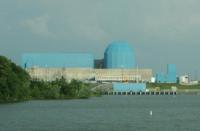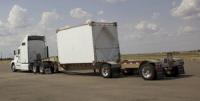-
Truth and Fearmongering: Yucca Mountain Nuclear Waste Repository
Is it a good idea to store 77,000 tons of highly radioactive nuclear waste in a repository in Nevada’s Yucca Mountain? Many Nevada politicians say it is a bad idea, but scientists argue that the facts do not support the fears these politicians stoke. These scientists say that Colorado, whose surface rock contains about a billion tons of uranium, should have much more to worry about than Nevada. One scientist says: “If the Yucca Mountain facility were at full capacity and all the waste leaked out of its glass containment immediately and managed to reach groundwater, the danger would still be 20 times less than that currently posed by natural uranium leaching into the Colorado River.”
-
-
Rectifying a wrong nuclear fuel decision
In the old days, new members of Congress knew they had much to learn. They would defer to veteran lawmakers before sponsoring legislation. But in the Twitter era, the newly elected are instant experts. That is how Washington on 12 June witnessed the remarkable phenomenon of freshman Rep. Elaine Luria (D-Norfolk), successfully spearheading an amendment that may help Islamist radicals get nuclear weapons. The issue is whether the U.S. Navy should explore modifying the reactor fuel in its nuclear-powered vessels — as France already has done — to reduce the risk of nuclear material falling into the hands of terrorists such as al-Qaida or rogue states such as Iran. Luria says no. Alan J. Kuperman writes in the Pilot Online that more seasoned legislators have started to rectify the situation by passing a spending bill on 19 June that includes the funding for naval fuel research. They will have the chance to fully reverse Luria in July on the House floor by restoring the authorization. Doing so would not only promote U.S. national security but teach an important lesson that enthusiasm is no substitute for experience.
-
-
Nuclear energy regulators need to bring on more cyber experts, watchdog says
The Nuclear Regulatory Commission is facing a mass exodus of cybersecurity experts in the years ahead, which could limit its ability to ensure the nation’s nuclear power plants are safe from digital attacks, an internal watchdog found. Jack Corrigan writes in Defense One that Nearly one-third of NRC’s cybersecurity inspectors will be eligible for retirement by the end of fiscal 2020, and agency officials worry they aren’t training enough people to take their place, according to the NRC Inspector General. With nuclear power stations becoming increasingly popular targets for online adversaries, the shortage of cyber expertise could leave the agency struggling to do its job, auditors said.
-
-
Exelon / Clinton nuclear officers ratify their first contract with NUNSO/LEOSU

Clinton nuclear security officers working for Exelon at Clinton Power Station have voted on 8 May 2019, to ratify their first contract with the National Union of Nuclear Security Officers NUNSO / LEOSU.
-
-
Public dread of nuclear power sets limits on its use
Nuclear power has been a part of the American energy portfolio since the 1950s, but for a number of reasons, the general public has long felt a significant dread about it.
-
-
HBO’s “Chernobyl” exposes the horrifying scope of Soviet deception
The new five-part miniseries, premiering 6 May, examines the Chernobyl nuclear disaster—and the brave people who sacrificed their lives to reveal the shocking truth. The Chernobyl nuclear disaster was the screw-up to end all screw-ups, playing a part in more than 93,000 deaths and turning the northern Ukrainian region uninhabitable. Nick Schager writes in the Daily Beast that, as HBO’s Chernobyl reveals, even more deadly than the radiation released by the accident were the lies that caused it in the first place—and, afterwards, stymied efforts to contain and combat it.
-
-
Los Alamos nuclear waste successfully shipped to WIPP

The first shipment in five years of Transuranic (TRU) waste from the Los Alamos National Laboratory has been successfully delivered to the Waste Isolation Pilot Plant (WIPP) near Carlsbad, New Mexico.
-
-
Detecting radioactive material remotely
Physicists have developed a powerful new method to detect radioactive material. By using an infrared laser beam to induce a phenomenon known as an electron avalanche breakdown near the material, the new technique is able to detect shielded material from a distance. The method improves upon current technologies that require close proximity to the radioactive material.
-
-
Easier access to radioactive waste
At the Hanford Site, waste retrieval has been completed in 17 of 149 large concrete underground single-shell tanks. The tanks were constructed of carbon steel and reinforced concrete between 1943 and 1964 to store a radioactive mix of sludge and saltcake waste from past nuclear processing activities. Hanford is installing new access holes in the tank domes for future retrieval efforts.
-
-
Robots help in the demanding Fukushima cleanup efforts
In 2011, a tsunami triggered by a magnitude 9.0 earthquake all but decimated the Pacific Coast of Tohoku, Japan, including the Fukushima Daiichi power plant. A catastrophic meltdown ensued. Many tons of nuclear fuel, boiled down to a radioactive lava, corroded the steel surrounding the facility’s three reactors. Today, the cleanup effort is still projected to take several decades. S&T and NIST developed standard test methods for robots, which the Japanese government is now beginning to apply directly to their Fukushima cleanup efforts.
-
-
Better monitoring of nuclear power plants, nuclear proliferation
The United Kingdom is investing nearly £10 million (about $12.7 million) in a joint project with the United States to harness existing particle physics research techniques to remotely monitor nuclear reactors. Expected to be operational in 2024, the Advanced Instrumentation Testbed (AIT) project’s 6,500-ton detector will measure the harmless subatomic particles called antineutrinos that are emitted by an existing nuclear power plant 25 kilometers, or about 15.5 miles, away.
-
-
The opening moments of the Chernobyl disaster: New theory
A brand-new theory of the opening moments during the Chernobyl disaster, the most severe nuclear accident in history, based on additional analysis. The new theory suggests the first of the two explosions reported by eyewitnesses was a nuclear and not a steam explosion, as is currently widely thought.
-
-
NRC weakens a critical safety regulation, ignoring Fukushima disaster lessons
The Nuclear Regulatory Commission’s (NRC), in a 3-2 vote, approved a stripped-down version of a rule originally intended to protect U.S. nuclear plants against extreme natural events, such as the massive earthquake and tsunami that triggered meltdowns at the Fukushima Daiichi nuclear plant in Japan in March 2011. The decision will leave U.S. nuclear plants dangerously vulnerable to major floods and earthquakes.
-
-
Robots to operate in nuclear no-go zones
Sturdy, intelligent robots which react to their surroundings are being developed to work in situations which are too dangerous for humans, such as cleaning up Europe’s decades-old radioactive waste or helping during a nuclear emergency.
-
-
U.S. must start from scratch with a new nuclear waste strategy: Experts
The U.S. government has worked for decades and spent tens of billions of dollars in search of a permanent resting place for the nation’s nuclear waste. Some 80,000 tons of highly radioactive spent fuel from commercial nuclear power plants and millions of gallons of high-level nuclear waste from defense programs are stored in pools, dry casks and large tanks at more than seventy-five sites throughout the country. “No single group, institution or governmental organization is incentivized to find a solution,” says one expert.
-
- All
- Regional
- Water
- Biometrics
- Borders/Immig
- Business
- Cybersecurity
- Detection
- Disasters
- Government
- Infrastructure
- International
- Public health
- Public Safety
- Communication interoperabillity
- Emergency services
- Emergency medical services
- Fire
- First response
- IEDs
- Law Enforcement
- Law Enforcement Technology
- Military technology
- Nonlethal weapons
- Nuclear weapons
- Personal protection equipment
- Police
- Notification /alert systems
- Situational awareness
- Weapons systems
- Sci-Tech
- Sector Reports
- Surveillance
- Transportation
Advertising & Marketing: advertise@newswirepubs.com
Editorial: editor@newswirepubs.com
General: info@newswirepubs.com
2010-2011 © News Wire Publications, LLC News Wire Publications, LLC
220 Old Country Road | Suite 200 | Mineola | New York | 11501
Permissions and Policies
Editorial: editor@newswirepubs.com
General: info@newswirepubs.com
2010-2011 © News Wire Publications, LLC News Wire Publications, LLC
220 Old Country Road | Suite 200 | Mineola | New York | 11501
Permissions and Policies
